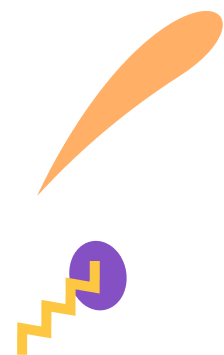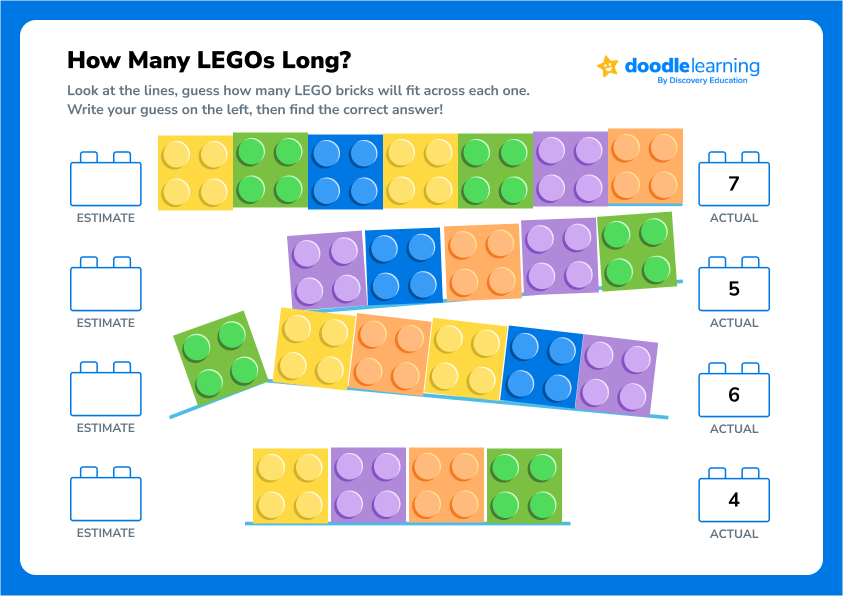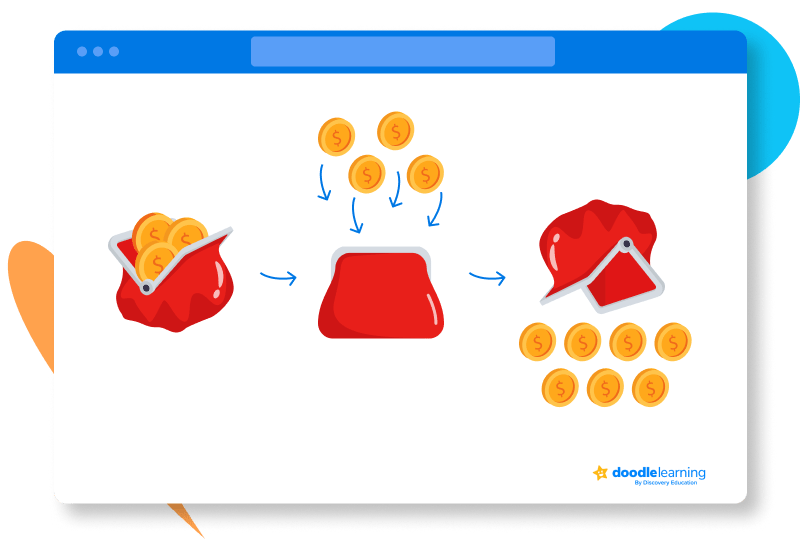


Author
Mhairi Sim
Published
July 2025


Key takeaways
Maths in Year 1 is all about building the foundational skills that’ll support children throughout their maths in primary and secondary school. For our littlest learners to get the most out of this year, learning has to be FUN!
Teachers will know that often, this is easier said than done, but thankfully, we’ve a bunch of exciting Year 1 maths activities that’ll work in the classroom or at home – let’s dive in!
Unlock unlimited maths questions
Put your skills to the test with fun exercises + maths games that are proven to boost ability!
Try DoodleMaths for free!
Select a year group
Hands-on learning with concrete materials is excellent for helping kids grasp many challenging maths concepts. That being said, there’s no need to rush out to buy lots of specialised maths resources! Most activities are just as effective with household items that we all usually have lying around.

This year, kiddos are learning to recognise each coin and note, so any opportunity to use real coins and notes (or play money if you have some) is invaluable!

Beads, buttons, pom poms, pipe cleaners, and paper plates are all superb concrete materials for a whole host of different Year 1 maths activities.
Letting children involve their toys is an excellent way to get them to engage with the learning! Have each child bring a different toy to class and spend time ordering or grouping the toys in different ways.
Some ways my class have chosen to order and group toys are:
– Tallest to shortest
– Heaviest to lightest
– Bigger than a pencil or smaller than a pencil
– Able to fit inside a tissue box and not able to fit inside a tissue box
Don’t worry too much about how accurate your kids are with their judgments! At this point in their learning, the goal is to introduce the concept of measurement and encourage them to use mathematical vocabulary in their discussions!
Our kids have a lot of maths learning to cover this year, so any opportunity to practice and build confidence at home is highly beneficial.
It’s as simple as practising counting with your child as you go up or down the stairs, or take steps on a walk! Spending time playing maths board games is another fun way to build maths confidence while having a little quality one-on-one time together!
Often, technology is an easy win when it comes to encouraging our little ones to practice their maths skills. The DoodleMaths app is packed with fun, engaging games that actually help develop your child’s maths ability!
Parents and teachers love our award-winning app for the confidence boost it gives their learners, along with the noticeable improvement in academic performance.
Making maths part of your child’s daily routine is the best way to help build their confidence.
Go on a number walk and get your little one to spot different numbers while they are out and about. You can discuss what the number is and what they think it means in the context of where it is.
You can adapt this concept to do a shape walk and have your child spot different 2D and 3D shapes. You could even turn it into a scavenger hunt by giving them a list of shapes they need to find.
‘Guess My Number’ is another fun game that can be played anywhere. One player picks a number while the other must ask questions to determine what the chosen number is. You can adapt this game to suit your child’s ability and build in target maths language like odd, even, greater than, or less than.
Having a ’number of the week is the final entry on our list of fun Year 1 maths activities. This is a fun way to encourage some maths learning at home with your kiddo, focusing on one number and applying different aspects of maths.
There are lots of excellent printable ‘number of the week’ resources out there that challenge kids to think about their number in terms of place value, number bonds, addition and subtraction equations, and more!

Parents, sign up for a DoodleMaths subscription and see your child become a maths wizard!

Book a chat with our team
If you’d like to use Doodle’s browser version, please visit this page on a desktop.
To log in to Doodle on this device, you can do so through our apps. You can find out how to download them here: